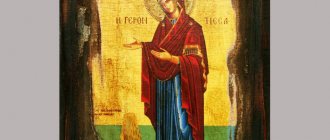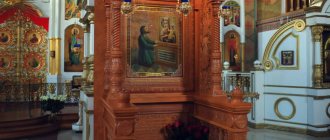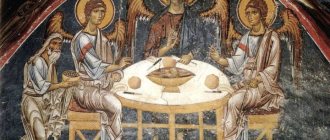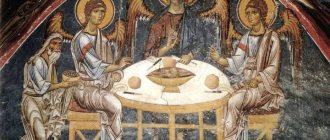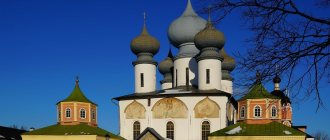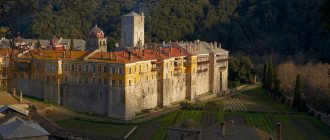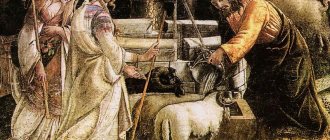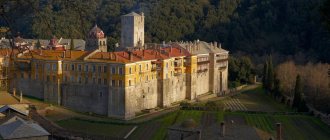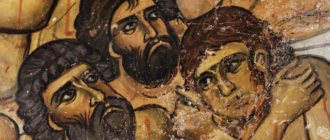The image was influenced by the ancient traditions of fine art, and in the works of the first Christian artists the Good Shepherd appeared as a handsome and cheerful beardless youth. In the Middle Ages, this interpretation was forgotten.
The return of the plot to European Christian churches occurred during the Renaissance, when secular art turned to the theme of the Good Shepherd, and then the image found its place in religious life, although it did not become widespread.
In the Byzantine tradition, the image of Pantocrator was chosen as the main iconographic type, therefore the Good Shepherd was hardly found in ancient Russian icon painting. The earliest images of the Good Shepherd created by Russian icon painters date back to the 18th century.
Ancient prototypes of the Good Shepherd
The iconography of the image of the Good Shepherd was seriously influenced by ancient art, and above all by two classical images of characters from ancient Greek mythology.
1. Orpheus - shepherd, musician, wonderful singer of ancient Greek mythology
, which is probably familiar to most readers from the legend about the trip to the world of the dead for his wife Persephone. However, this is far from the only thing for which he was famous in the ancient world. According to surviving written sources, Orpheus was also the founder of one of the first ancient philosophical schools, which was called Orpheism.
In the tradition of ancient art, Orpheus was depicted as a shepherd surrounded by animals or a flock of sheep. According to Hellenistic traditions, Orpheus appeared before the audience as a young, strong and handsome young man, often barefoot and with a staff in his hand. There is no doubt that this type of image was adopted by Christian artists of the first centuries.
2. Hermes Kriophoros, that is, carrying a lamb, was one of the incarnations of the god Hermes.
It is usually remembered that Hermes was revered as the deity of trade and deception, but in reality Hermes' functions were much broader and more significant. He was included in the pantheon of the most famous and revered gods as the patron of shepherds and travelers, as a guide of the souls of the dead to the underworld, as a teacher and patron of all kinds of sciences. In Tanagra there was a temple dedicated to Hermes Kriophoros, who carried a lamb around the city and thereby saved it from an epidemic, so Hermes was credited with the functions of a healer and protector from disease.
The sculptural images represented the deity as a young youth of athletic build with a lamb on his shoulders. It was precisely this image of Jesus that Christian artists of the first centuries used, which sometimes creates problems in identifying images of that era: there are no elements that make it possible to unambiguously determine whether it is a pagan image or a Christian one. Some researchers believe that such a similarity protected Christians during the years of the first persecution, because the true meaning of the image was clear only to them, and the persecutors were satisfied with the similarity of the image with a pagan deity.
Several common motives probably influenced the choice of these particular prototypes for the image of Jesus Christ. Both Orpheus and Hermes had the ability to descend into the world of the dead and return from there alive. Both patronized shepherds and acted as teachers. Both were loved as good beings calling for spiritual improvement. Both saved people from the wrath of the gods.
Pagan symbolism
Main article: Cryofor
Late Roman marble copy
of the Criophorus
from Calamis (Museo Barracco, Rome)
In the ancient Greek cult cryophorus or cryofor
(Κριοφόρος), "ram bearer" is the figure who marks the ceremonial sacrifice of the ram.
This becomes the epithet of Hermes: Hermes Kriophoros
.
In two-dimensional art Hermes Krioforos
transformed into Christ carrying a lamb and walking among his sheep: "Thus we find philosophers holding scrolls or Hermes Kriophoros, who can be transformed into Christ giving the Law (Traditio Legis) and the Good Shepherd respectively."[12] The Good Shepherd is a common motif from the Catacombs of Rome (Gardner, 10, fig. 54) and in sarcophagus reliefs, where Christian and pagan symbolism are often combined, making reliable identification difficult. It is defined as syncretism, the mixing of images from different cultures and religions.
Early depictions of the Good Shepherd
The earliest images of the Good Shepherd are preserved in the catacombs of Rome.
They date back to the 1st and 2nd centuries, and the first Christians did not create these images as prayer images. The Bible repeatedly contains prohibitions on the image of God; it took several centuries to develop the concepts of Christian art and determine the place of the icon in it. For early Christians, images of the Good Shepherd were not images of Jesus Christ himself. Perhaps the motives for creating these images were the simple need to designate the gathering place, as well as the natural desire to decorate it, to turn the dungeon into a kind of temple. The Good Shepherd served as a symbolic reminder of Salvation.
Good Shepherd. Catacombs of Saint Callixtus, Rome
The first images of the Good Shepherd are the image of a handsome, slender young shepherd in a short tunic. He holds a flute and/or staff in his hands, and sometimes has a bag slung over his shoulder. Usually the shepherd stands in a free position, extending his hand to one of the animals. On his shoulders lies a lamb, the size of which is sometimes disproportionate in relation to the shepherdess. The animals depicted next to the shepherd can be recognized not only as sheep, but also as dogs. There are variants of the seated Shepherd, as well as images in which the Good Shepherd appears as a child, a boy of seven to nine years old.
Good Shepherd. Fresco
In the first few centuries, the image of the Good Shepherd was almost the only type of picture in Christian painting.
Moreover, there is evidence that such images were found in different regions, including on household objects. The style of painting was naturally based on ancient images that permeated the entire civilized world. Already in the 5th century, features of ancient influence can still be traced in the mosaics of Ravenna.
Good Shepherd. Mosaic of the Mausoleum of Galla Placidia, Ravenna. 440s.
The separation of Christian art occurred along with the development and spread of Christianity itself. In the 4th century, Christianity became the state religion, and this contributed to the development of new, more solemn and obviously different from ancient models. The Good Shepherd gave way to the Pantocrator (Almighty), and many other iconographic types appeared. During the era of iconoclasm, most ancient images were destroyed. And after the revival of Christian painting, the Good Shepherd lost the signs of antiquity - he became older, he had a beard, and he was “dressed up” according to the existing iconographic “fashion”.
Early Christian art
The image of the Good Shepherd is the most common of the symbolic images of Christ found in early Christian art in the Catacombs of Rimado before Christian imagery became explicit. The form of the image of a young man carrying a lamb around his neck is directly borrowed from a much more ancient pagan. cryophorus (see below) and in the case of portable figurines such as the most famous now in the Pio Cristiano Museum, Vatican (right), it is impossible to tell whether the image was originally created with the intention of having a Christian meaning. The image continued to be used in the centuries after Christianity. legalized in 313. It was probably not originally understood as a portrait of Jesus, but a symbol like others used in early Christian art,[7] and in some cases may also have represented the Shepherd of Hermas, a popular Christian literary work of the 2nd century.[ 8][9] However, by about the 5th century the figure more often took the form of a conventional image of Christ, since it had been developed by this time, and received a halo and rich clothing,[10] as on the apse mosaic in the church of Santi Cosma e Damiano in Rome or in Ravenna (correct ). Depictions of the Good Shepherd often include a sheep on his shoulders, as in the Lucan version. Parable of the Lost Sheep.[11]
The Good Shepherd in the Old Testament
As a shepherd watches his flock on the day when he is among his flock that is scattered, so I will look over my sheep and deliver them from all the places where they were scattered on a cloudy and dark day (Ezek. 34:12)
The Lord is my Shepherd; I won't want for anything. (Ps. 23:1)
For a modern city dweller, the importance of the shepherd for ancient village communities, whose survival depended on the condition of the herd, is not always obvious. The shepherd had to be not only, and not so much a carefree guy playing the flute, but an agricultural technician, a veterinarian, a biologist, and a hunter all rolled into one. The shepherd was often one of the leaders of the community, the most authoritative and significant person, whose words and decisions were carried out unquestioningly. And in the metaphorical representation of the Lord as a shepherd, the choice of this particular role is far from accidental. Although, of course, the direct analogy of humanity with an unreasonable herd that requires a guiding force is also important.
The Old Testament also contains many references to the sacrifice of lambs, symbolizing innocence and purity. Shepherd Abel sacrifices a lamb. Isaac lying on the altar is replaced by a lamb. The shepherd David saves a lamb that has strayed from the flock.
Gallery
- At the Catacombs of Priscilla, Rome
- 4th century image in the Museum of the Baths of Diocletian, Rome
- Mosaic in the Mausoleum of Galla Placidia, Ravenna, Italy, c. 425
- Christ as the Good Shepherd, unknown artist from Lower Bavaria, 1750
- 19th century German artist Bernard Plokhorst
- 20th century stained glass image, Australia
- Emblem of the Catechism of the Catholic Church
- Oratorio Santa Cueva. Cadiz, Spain
- Jesus as a Shepherd Boy, Church of the Good Shepherd (Rosemont, PA)
The Good Shepherd in the New Testament
I am the good shepherd: the good shepherd lays down his life for the sheep. But a hireling, not a shepherd, whose sheep are not his own, sees the wolf coming, and leaves the sheep and runs; and the wolf plunders the sheep and scatters them. But the hireling flees because he is a hireling, and does not care about the sheep. I am the good shepherd; and I know Mine, and Mine know Me. As the Father knows Me, so I know the Father; and I lay down my life for the sheep. I have other sheep which are not of this fold, and these I must bring: and they will hear My voice, and there will be one flock and one Shepherd. (John 10:11-16)
As a shepherd, Jesus expands his knowledge and his authority over the sheep. After all, he knows all his sheep by name and calls them by name. The personalized appeal that Jesus exhibited both in his gathering of sheep and in his dealings with people introduced into Christianity the logic of the individuality of faith for each believer. Jesus knows everyone and can speak to everyone, calling them by name.
As a shepherd, Jesus is willing to give his life for his sheep. And as a sacrifice for his sheep, Jesus himself becomes the Lamb of God, taking upon himself all the sins of the world. In this vein, the icon of the Good Shepherd takes on multiple symbolic meanings, recalling both Jesus' pastoral role and his sacrificial role.
When the Lord carries us in his arms...
Read also:
In difficult moments, the Lord carries a person in his arms - a parable
There is a modern parable: a man reproaches God for the fact that the Creator allegedly forgot about his creation. He promised to always be there, but in the most difficult moments he left.
To figuratively show that a person is mistaken, the Lord invites him to look at the traces of life. Wherever this “lost sheep” walked, footprints were always visible next to it. But in one place, instead of double imprints - man and God - only one remained. The man grumbled: “Lord, but here you left me alone!” To which God replied: “No, I didn’t leave. These are not your footprints, but Mine. At this time I simply carried you in my arms.”
This is how Christ carries each of us, like a lost sheep, in the most difficult moments in his arms. Just don’t become bitter and think that God has abandoned us at these moments. Take a closer look at the footprints in the sand: are they yours or the Lord’s? “The good shepherd lays down his life for the sheep.”
RARE AND REVERED ICONS
The dramaturgy of the image lies in the fact that the animal symbolizes the lost sheep, which the Good Shepherd - Christ - takes on his shoulders and carries to his home in order to heal it and return it healthy to the flock. “We will take it in the frame and bring it to the Father.” You will not see this image (published) just like that: it is located in the prison church of the notorious Moscow “Butyrka”. This place is in the very center of Moscow, but comfortably hidden behind the houses, so you wouldn’t even guess that there was a prison there. One winter I had to get lost in this area in the evening. I’m looking for a house and suddenly I hear from somewhere above: “Women, there’s a man under the windows!” I looked up, and there were lattice windows - a prison, that means. Even though I knew that she was here, it was creepy: darkness, winter, snow up to my ears and a hungry female roar: man!!! Help them, Lord, to cleanse their souls! Amen+++ Well, now the story with the sheep: this is already from an article on the portal “Orthodoxy and the World”. I’m not slandering the article—I’m honestly popularizing it.
Alexandria sheep
Archpriest Sergiy Pravdolyubov | January 31, 2007
In my now distant youth there were many interesting incidents in student and subdeaconal life. I would like to remember some of them.
His Holiness and Beatitude Pope and Patriarch of Alexandria Nicholas VI, Judge of the Universe, came to Moscow. This is not the whole title I mentioned. For some reason, the seminarians especially liked the “judging” in the title, but these two words have a very ancient origin.
The meeting was most solemn. To the second pair of subdeacons, Fr. Sergius Sokolov (the now deceased Bishop of Novosibirsk) and I were tasked with vesting the Ecumenical Patriarch in the middle of the church. Accordingly, the first subdeacon was responsible for the buttons, omophorion and panagia, that is, the front side of the patriarch, and I was responsible for the “rear”. Before the service, I was instructed that the club in Alexandria is not worn over the shoulder, but is tied with a special loop, and everything else seems to be the same with us.
The choir sings, the entrance prayers are read, the Patriarch ascends to the pulpit, and vestments begin. Everything goes smoothly, there are no errors.
And at the very end, when all the complex buttons of the omophorion were already fastened, I looked and saw that the omophorion, somehow strangely, not in Russian, lay directly on the patriarch’s neck, and not vertically and solemnly raised, like all our bishops. I decided that this was my oversight, and quietly, carefully pulled him towards me and positioned him in the Russian manner. The Patriarch just as quietly pulled him back to his neck. My Ryazan intelligence was not enough to understand the full significance of the reverse movement of the omophorion of the Alexandrian saint. And I again returned the omophorion to its original place, pulling it in my direction. The Patriarch again, this time angrily and decisively, repeated the previous movement. And this time I did not heed all the danger of the formidable Judge of the Universe.
Seeing the approaching archpriest with a tray in his hands and three panagias, I thought that the chains should be placed under the omophorion, as is our custom, but it was in the way, lying on the neck. And when I pulled the omophorion of the Alexandrian Patriarch for the third time, he sharply turned sideways to me and, in Greek, with anger and irritation, energetically and angrily expressed to me all his indignation. I got scared, asked for forgiveness, and only when I saw that Father Sergius Sokolov was laying the chains from the panagia on top of the omophorion, and that it rested firmly and unshakably on the saint’s neck, did I realize that this was ancient Alexandrian symbolism with the deepest meaning, it’s just that no one warned me.
The omophorion should lie on the neck, for it symbolizes the lost sheep, which the Good Shepherd - Christ - takes on his shoulders and carries to his home in order to heal it and return it healthy to the flock. Let us take it in the frame and bring it to the Father. Likewise, the Patriarch of Alexandria, following the example of the Savior, takes on his shoulders and presses the symbolic Alexandrian sheep to his saintly neck with chains from panagias.
Recommendations
Quotes
- Grabar 1980: The figure (...) is an allegory of Christ as a shepherd.
- Reed 2001, para. 3.
- Hultgren 2000, para. 2.
- Griggs 2003, para. 52.
- Barry 1911.
- von Huegel 1911C. 452–458.
- Syndicus 1962, pp. 21-23.
- Jensen 2002.
- Jensen 2000C. 37-41.
- Syndicus 1962 C. 130–131.
- Lowry 2007, para. 69.
- Murray and Murray 1996, para. 475.
Sources
- Barry, William (1911). "Parables". In Herbermann, Charles (ed.). Catholic Encyclopedia
.
eleven
. New York: Robert Appleton Company.
- Grabar, Andre (1980). Christian Iconography: A Study in the Origins
. Routledge and Kegan Paul.CS1 maint: ref=harv (communication)
- Griggs, Donald L. (2003). The Bible from Scratch: The New Testament for Beginners
. Westminster Press by John Knox. ISBN 978-0-664-22577-3.CS1 maint: ref=harv (communication)
- Hultgren, Arland J. (2000). Parables of Jesus: A Commentary
. Wm. B. Eerdmans. ISBN 978-0-8028-6077-4 .CS1 maint: ref=harv (communication)
- Jensen, Robin Margaret (2000). Understanding Early Christian Art
. Psychology Press. ISBN 978-0-415-20454-5 .CS1 maint: ref=harv (communication)
- Jensen, Robin M. (October 2002). "The Two Faces of Jesus" Bible Review
. Vol. 17 no. 8.
- Lowry, Walter (March 2007). The Art of the Early Church
. Read books. ISBN 978-1-4067-5291-5 .CS1 maint: ref=harv (communication)
- Murray, Peter; Murray, Linda (1996). The Oxford Companion to Christian Art and Architecture
. Oxford University Press. ISBN 978-0-19-866165-8 .CS1 maint: ref=harv (communication)
- Reed, Barbara E. (2001). Parables for Preachers: The Gospel of Matthew: Year
A. Liturgical Press. ISBN 978-0-8146-2550-7 .CS1 maint: ref=harv (communication)
- Syndicus, Edward (1962). Early Christian Art
. Burns and Oates.CS1 maint: ref=harv (communication)
- von Hügel, Friedrich (1911). "John, Gospel of St." In Chisholm, Hugh (ed.). Encyclopedia Britannica
.
15
(11th ed.). Cambridge University Press. pp. 452–458.
The meaning of the icon of Alexander Svirsky
This icon depicts an old man with intelligent eyes and raised hands to the Almighty in prayer for all humanity. At the beginning of the nineteenth century, the remains of the elder were taken away by supporters of the atheistic war, but as church chronicles say, one museum employee saved the relics. Only at the end did the holy relics of Alexander Svirsky become available for veneration again.
For a long time, many researchers removed a particle of the remains of the wise old man for study, but none of them was able to give a scientific explanation for this miracle. The remains of the Wonderworker are preserved in a state untouched by time, and at moments of special importance they begin to emit fragrances. At such times there are always a lot of bees in the temple.
There are known cases of healing that happened to believers suffering from paralysis of the arms or legs, as well as those who were diagnosed with cancer, blindness or possession by the unclean.
They turn to the holy image of the venerable elder with a prayer for strengthening faith and deliverance from bodily ailments. In addition, those who have decided to devote their lives to the Lord and those who despair of having a child also pray. Dear Friends, we remind you that it is easy to buy the icon of Alexander Svirsky on our pages!
